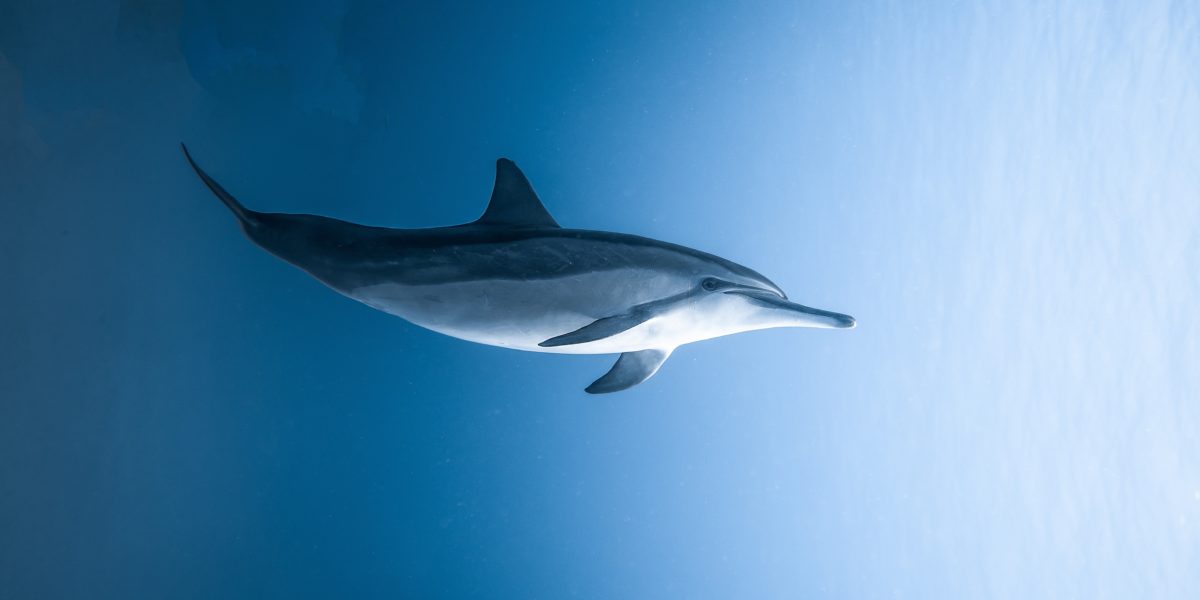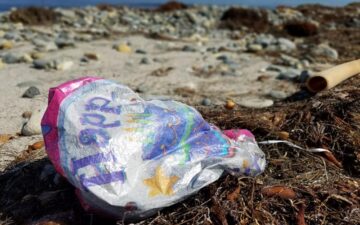Humans are social animals; we benefit from interactions with others that cause our brains to spark new ideas and find pathways of creativity that might otherwise have remained hidden. Yet in the past two years, the global pandemic reduced cooperative work experiences to a de minimus level. Now, as the world begins to emerge, opportunities for collaboration are primed to once more become critical drivers of innovation, allowing small businesses and start-ups to find partners with complimentary skill sets, creating economies of scale, and allowing new entrants to compete with established corporate giants in ways that can shake up the status quo.
As we face the collective, existential crisis of climate change that collective status is in dire need of agitation. One area that can serve as a prime, untapped source of sustainable, environmentally respectful solutions is the emergence of the Blue Economy. And entrepreneurs around the United States and across the globe are tapping into those opportunities in emerging coops known as Ocean or BlueTech Clusters. In 2021, The Ocean Foundation published “The Blue Wave: Investing in BlueTech Clusters to Maintain Leadership and Promote Economic Growth and Job Creation”. This report details the emerging trend of developing cluster organizations focused on development of a key subset of the sustainable Blue Economy in the United States.
Michael Porter, a professor at Harvard Business School, has built his career around articulating the added value that geographic co-location plays in building valuable networks of symbiotic business development, and he calls these economic ecosystems “clusters.” In recent years, leaders in ocean innovation have embraced the cluster movement and increasingly incorporated tenets of the Blue Economy and are taking advantage of the triple helix of business, academia, and government to foster sustainable economic growth opportunities.
Recognizing that “every great civilization throughout history has been an ocean tech powerhouse,” The Ocean Foundation’s report called for the United States to “launch an Apollo-style ‘Blue Wave Mission’ focused on innovative technology and service to promote sustainable usage of the ocean and freshwater resources.”
Over the past few years, the federal government has made some initial forays into supporting ocean cluster organizations, including through the Economic Development Administration’s (EDA) “Build to Scale” grant program that included the Blue Economy as an area of focus.
Last month, Alaska Senator Lisa Murkowski picked up that mantle and introduced new legislation in partnership with Sen. Maria Cantwell (D, WA) and a coalition of bipartisan colleagues from four U.S. coastal regions. The bill would accelerate the development of a movement that is already taking root around the country. That bill, S. 3866, the Ocean Regional Opportunity and Innovation Act of 2022, would provide an infusion of federal support into nascent ocean cluster organizations around the country to spur “technological research and development, job training, and cross-sector partnerships.”
Taking advantage of the historical accident that initially established the National Oceanic and Atmospheric Administration (NOAA) in the Department of Commerce upon its founding in 1970 rather than the more obvious Department of the Interior, the bill directs the Secretary of Commerce to designate and support cluster organizations in seven regions of the country, coordinating the business acumen of the EDA and NOAA’s scientific expertise. It authorizes funding to support operations and administration as well as establishment of physical workspaces critical to building the transdisciplinary collaboration critical to realizing the “greater than the sum of the parts” potential that the cluster model makes possible.
Ocean or BlueTech Clusters are already taking root around the country as this story map showing “BlueTech Clusters of America” clearly illustrates, and the development potential of the Blue Economy in each region is abundantly clear. NOAA’s Blue Economy Strategy Plan 2021-2025, released in 2018, determined that it “contributed about $373 billion to the nation’s gross domestic product, supporting more than 2.3 million jobs, and grew faster than the nation’s economy in its entirety.”
By creating opportunities — physical locations or virtual networks of sustainability-minded innovators and entrepreneurs — clusters can play a vital role in taking advantage of these opportunities. This model has already proven successful in other parts of the world, particularly in Europe where examples in Norway, France, Spain, and Portugal have leveraged government investment into significant growth in Blue Economy metrics.
In the United States, we see these models burgeoning in the Pacific Northwest where organizations like Maritime Blue and the Alaska Ocean Cluster have benefitted from strong public sector support from both federal and state government programs. San Diego-based TMA BlueTech, an early U.S. adopter of the innovation business cluster model, is a membership-based non-profit with participating organizations across the U.S. and abroad helping to support operating expenses of the cluster organization itself.
In other cases, such as the New England Ocean Cluster based in Portland, Maine, the cluster operates almost entirely as a for-profit entity, following a blueprint established by the Iceland Ocean Cluster in Reykjavik. Iceland’s model is the brainchild of its Founder and CEO, Thor Sigfusson. His organization, founded over a decade ago, launched with the goal of increasing utilization of Iceland’s signature seafood, the cod. In large part due to innovations that emerged from partnerships in the cluster, utilization has increased from about 50% of the fish to 80%, creating commercially viable products such as dietary supplements, leather, biopharmaceuticals, and beauty products from what had previously been considered waste components.
As the U.S. government increasingly looks to ocean clusters to energize its Blue Economy, all forms of cluster organization will find room to grow in whatever means is most applicable and appropriate for the regions in which the organizations develop. What will work in the Gulf of Mexico, for example, where the oil and gas industry is a huge economic driver and there is a long history of federal government investment, a different model will be needed than in New England with many industries vying for access to the waterfront and a booming tech and innovation hub in Boston and Cambridge that has emerged to augment over 400 years of working waterfront history.
With multiple mechanisms now making headway via private sector investment and renewed government attention, ocean clusters are poised to jumpstart development of sustainable economic opportunity in America’s Blue Economy. As the world recovers from the pandemic and begins to face the imperative of climate action, they will be a vital tool in safeguarding the future of our miraculous ocean planet.
Michael Conathan is a Senior Policy Fellow for Ocean and Climate with the Aspen Institute’s Energy & Environment Program and an independent ocean policy consultant working out of the New England Ocean Cluster in Portland, Maine.







